For years, intelligent automation was the kind of promise that looked good on paper but struggled to deliver at scale. Positioned somewhere between robotic process automation (RPA) and AI-enabled transformation, it often landed in pilot purgatory—too technical for business leaders to drive and too strategic for IT to own outright.
That’s no longer the case.
As enterprise AI ambitions mature and digital transformation fatigue sets in, intelligent automation is re-emerging as a critical strategic lever. The difference this time is in both the architecture and the urgency. Organisations are no longer experimenting with automation for efficiency’s sake.
They’re pursuing orchestrated, AI-powered systems that can reduce risk, optimise cost, and scale insight across functions—without fragmenting operations in the process.
We’ve also captured these shifts in a short video:
Intelligent automation is no longer a future-facing trend. It is an active, enterprise-wide strategy—and one that’s already reshaping how the most resilient organisations operate, measure value, and adapt under pressure.
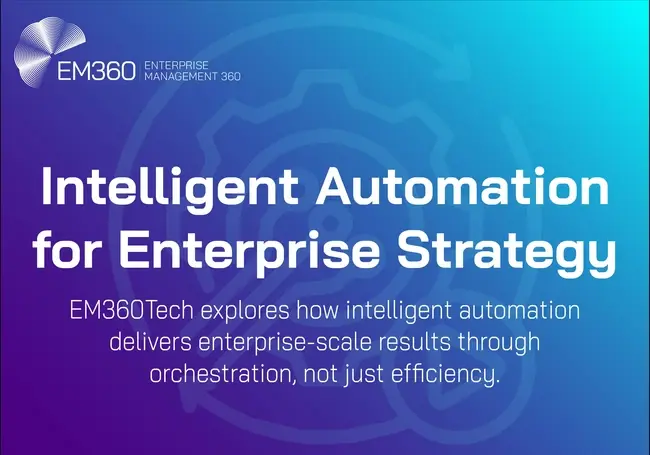
What Intelligent Automation Really Means for Enterprises
For enterprise leaders, intelligent automation isn’t about swapping humans for bots. It’s about building systems that can act, adapt, and scale with purpose.
At a practical level, intelligent automation brings together artificial intelligence, RPA, analytics, and decision engines into workflows that don’t just run—they respond. These are systems that can interpret data, trigger decisions, and orchestrate outcomes across departments without waiting for manual intervention.
That’s a long way from where automation started. Traditional RPA was built to follow rules. It handled repetitive tasks well, but it couldn’t manage context or change. Every time a form layout shifted or a process evolved, someone had to step in and rewrite the logic. The result was fragility. And in complex, federated organisations, fragility doesn’t scale.
Intelligent automation fixes that by making systems aware of what they’re doing and why. It adds machine learning to spot patterns, natural language processing to handle unstructured input, and cognitive automation to make decisions based on live data. The outcome isn’t just faster execution.
It’s a system that understands process intent and adapts when the environment shifts. This is what separates intelligent automation from both legacy RPA and the more inflated claims of hyperautomation.
It’s not about piling on tools. It’s about creating resilient, orchestrated systems that can operate across silos, support strategy, and scale without collapse. Enterprises don’t need more bots. They need automation that makes sense in a real-world, real-time environment.
That’s what intelligent automation is built for.
Why Intelligent Automation Is a Board-Level Priority
Intelligent automation has moved from pilot projects to boardroom mandates because the stakes have changed. This isn’t about futureproofing anymore. It’s about catching up.
Enterprise leaders are under pressure to scale AI beyond isolated use cases, but most still lack the internal infrastructure to do it well. Governance models are patchy. Data readiness is inconsistent.
And many early AI investments have failed to deliver meaningful returns. Intelligent automation is now seen as the strategy that can close that gap between ambition and execution.
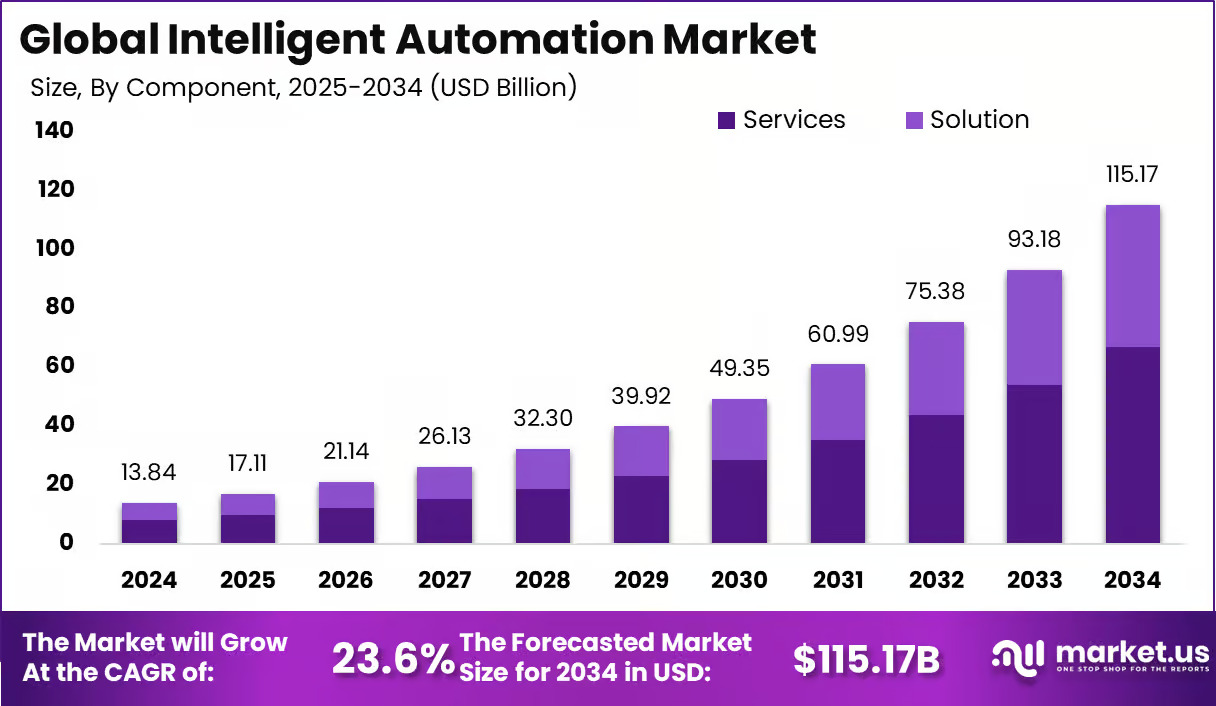
In 2025, the business case is coming from multiple angles. Operational efficiency remains a driver, especially as organisations navigate inflationary pressure and cost-cutting cycles. But the real urgency sits at the intersection of complexity and expectation.
Enterprise systems have become more distributed, teams more hybrid, and service delivery more dynamic. Orchestration is no longer a technical goal. It’s a business requirement.
At the same time, talent constraints are forcing automation to pick up more of the load. Skills shortages in data, cloud engineering, and AI governance mean most organisations cannot scale capability the way they scale infrastructure.
Intelligent automation helps offset those constraints without adding headcount or overloading already stretched teams. There’s also pressure from the top. Boards want to see results from AI investments, and they’re asking for evidence of value.
A 2024 McKinsey study found that while 92 per cent of companies plan to increase AI investment over the next three years, only 1 per cent are mature in their ability to deploy AI for measurable business impact. That gap is not just a technical problem. It’s a strategic risk.
For many, intelligent automation has become the most viable path to realising AI’s promised returns. It delivers measurable gains without requiring every department to become AI-native. And it provides a structured way to build resilience into the systems that carry the business forward.
Enterprise Use Cases That Actually Deliver Value
Intelligent automation is finally moving beyond experiments. The use cases that matter now are the ones driving measurable, cross-functional value. These are not pilots. They’re live, scalable systems that improve outcomes, not just efficiency.
Finance and real-time reconciliation
In finance, intelligent automation is helping teams reduce manual effort and shift toward more strategic work. Data from PwC’s 2024 Finance Effectiveness Benchmark report shows that while most finance teams still spend around 28 per cent of their time on tasks that could be automated, the most efficient organisations have brought that number down to just 19 per cent.
The biggest improvements are showing up in areas like management reporting, customer billing, and general accounting—all processes with a high volume of manual inputs and repetitive checks. In top-performing teams, automation is taking over much of that work, speeding up month-end close cycles and reducing rework without increasing risk.
Instead of chasing numbers and fixing formatting, finance teams are spending more time on analysis, scenario planning, and business support. Intelligent automation is not just saving time. It’s helping finance evolve from reporting on the business to actively shaping how it runs
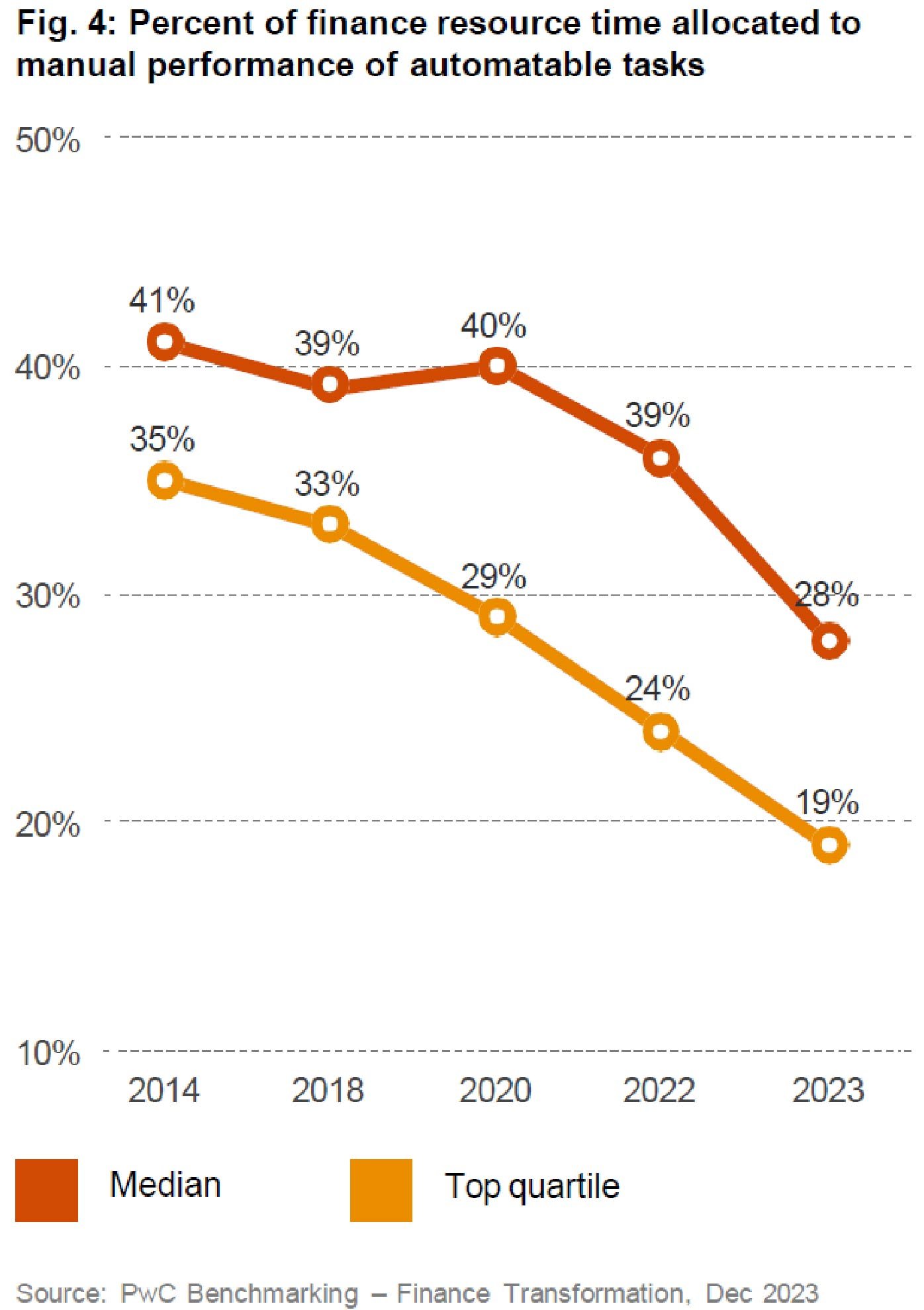
Customer service that escalates smart, not fast
Customer experience teams are using IA to triage, resolve, and escalate with more precision. AI handles repetitive queries and sentiment detection, while workflows route high-risk cases to human agents with context already embedded.
The result is faster resolution, reduced case load per agent, and better NPS scores without adding headcount.
Operations with live visibility and smart response
In supply chain and operations, intelligent workflows are replacing brittle automation scripts. IA helps teams react to live conditions—whether that’s stockouts, route delays, or supplier issues—by ingesting data across systems and triggering smart responses.
This has enabled dynamic inventory balancing, automated scheduling, and fewer costly interventions across distributed environments.
HR automation that reduces effort without losing control
Intelligent automation is helping HR teams offload administrative burden and focus on strategic work. Research from Deloitte shows that HR staff spend up to 57 per cent of their time on routine administrative tasks 𑁋 areas that can be largely automated to free up capacity for more impactful work.
In onboarding specifically, automation is becoming a game-changer. Nearly 68 per cent of organisations now use AI to streamline hiring and onboarding processes. And it’s making a real difference: one study found that onboarding automations make the process 67 per cent faster, while also driving 16 per cent higher new‑hire retention.
These are not just efficiency gains—they’re experience wins. Automation helps HR move beyond paperwork and compliance to focus on talent engagement, onboarding effectiveness, and building teams that stick.
IT and infrastructure that heals before it breaks
In IT, intelligent automation is improving uptime without increasing tool sprawl. It can monitor hybrid infrastructure, detect anomalies, and trigger responses based on pattern recognition rather than pre-coded logic.
This means less alert fatigue, faster incident triage, and stronger operational resilience—especially in complex, multi-cloud environments.
Each of these use cases reflects the same shift: from task-based automation to orchestrated, intelligent action. It’s not just about doing things faster. It’s about doing them better, with systems that can respond to change as easily as they execute routine.
Scaling Intelligent Automation with the Right Frameworks
For intelligent automation to deliver real value, it has to move beyond isolated wins. Pilots might prove the technology works, but they rarely test what it takes to scale—especially across systems, teams, and decision layers.
Without the right structure, most automation efforts stall. Use cases remain disconnected. Ownership becomes unclear. Metrics get fuzzy. And the systems that were supposed to create efficiency end up adding friction instead.
Scaling requires a maturity model. While every organisation enters from a different place, the trajectory is familiar: manual to scripted, scripted to intelligent, intelligent to orchestrated. Each stage comes with new questions around governance, data readiness, and cross-functional alignment.
At early stages, automation tends to live in silos. It’s project-based, often reactive, and measured in hours saved. As maturity builds, teams shift their focus from outputs to outcomes. Orchestration replaces task-level scripts. Automation starts pulling from shared data, applying decision logic, and feeding results back into systems that learn over time.
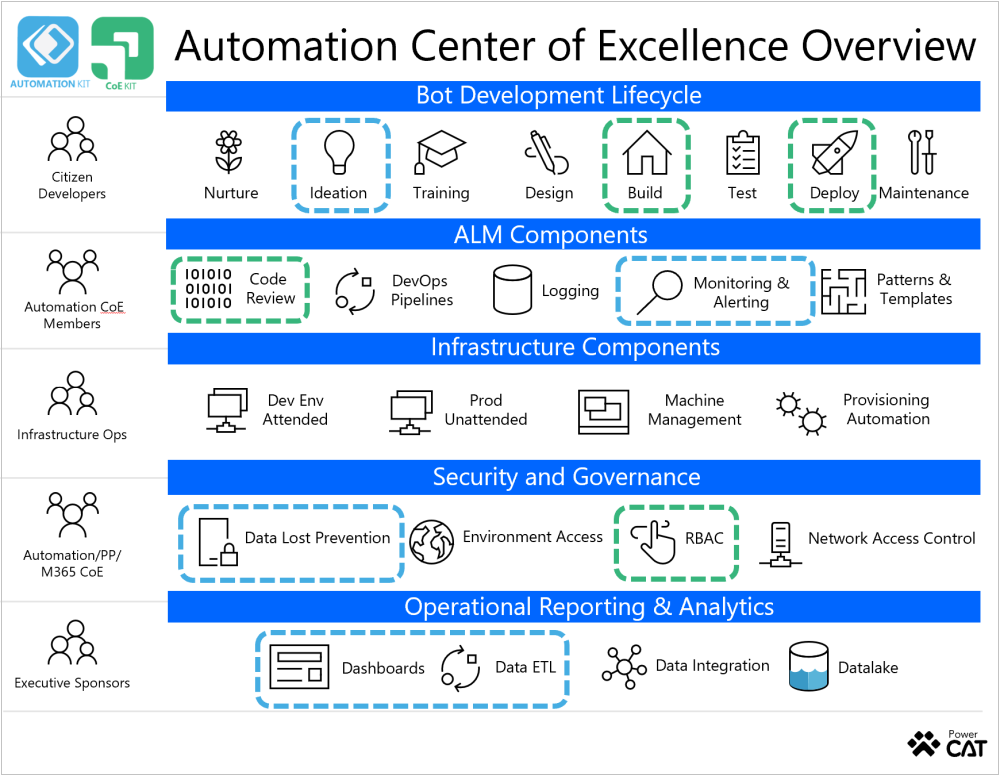
The most mature organisations treat intelligent automation as an enterprise capability. They embed it into operational strategy. They establish governance frameworks that define ownership, validate outputs, and control risk. And they avoid fragmentation by building shared roadmaps across AI, data, and process teams.
There’s no single framework that works for everyone. The right approach depends on the scope, complexity, and culture of the business. Some organisations adopt centralised governance frameworks, where all automation initiatives are aligned through a single centre of excellence. This works well for highly regulated environments, or for businesses where standardisation is a priority.
Others use federated models, giving each business unit the autonomy to build and deploy its own solutions while following shared principles. This is more flexible, and often faster to scale in global organisations with region-specific needs.
A third model, often overlooked, is domain-led orchestration—where automation is embedded within functional areas like finance, customer ops, or HR, but supported by shared tooling and reporting. This strikes a balance between control and adaptability, especially when workflows are too specialised for one-size-fits-all approaches.
The best framework is the one that reflects how your organisation actually operates, not how it says it does. Choosing one should start with an honest audit of internal capabilities:
- How mature is your data architecture, really?
- Where do most automation requests come from—IT, ops, or business teams?
- Are your systems designed for interoperability, or are they stitched together with workarounds?
- How quickly can you enforce governance without blocking delivery?
There’s no prize for picking the most sophisticated framework. The real win is selecting one that your teams can actually execute—and that can flex as needs evolve.
The question isn’t whether automation can scale. It’s whether the organisation is structurally ready to support it. A few diagnostic prompts can help guide that assessment:
- Is there a clearly defined owner for enterprise automation strategy?
- Are data flows unified, accessible, and aligned across systems?
- Is governance equipped to manage risk as automation grows in scope?
- Do current metrics reflect outcomes, not just activity?
- Are teams building from the same roadmap, or working in parallel?
Getting these answers right upfront avoids a long and expensive detour through pilot purgatory. Scaling intelligently means building from a foundation that can support the weight.
The Enterprise Tech Stack Powering Intelligent Automation
Scaling intelligent automation is not just about picking the right tools. It’s about building the right system.
That system starts with a core layer of technologies designed to interpret data, trigger decisions, and execute tasks across functions. It includes machine learning to identify patterns, natural language processing to handle unstructured inputs, and rule engines that translate context into action.
But none of those components work in isolation. They have to be orchestrated. This is where intelligent automation diverges from traditional automation stacks. The value lies in the interplay. Tools don’t just complete tasks. They pass context between systems, respond to change, and feed insight back into the decision layer.
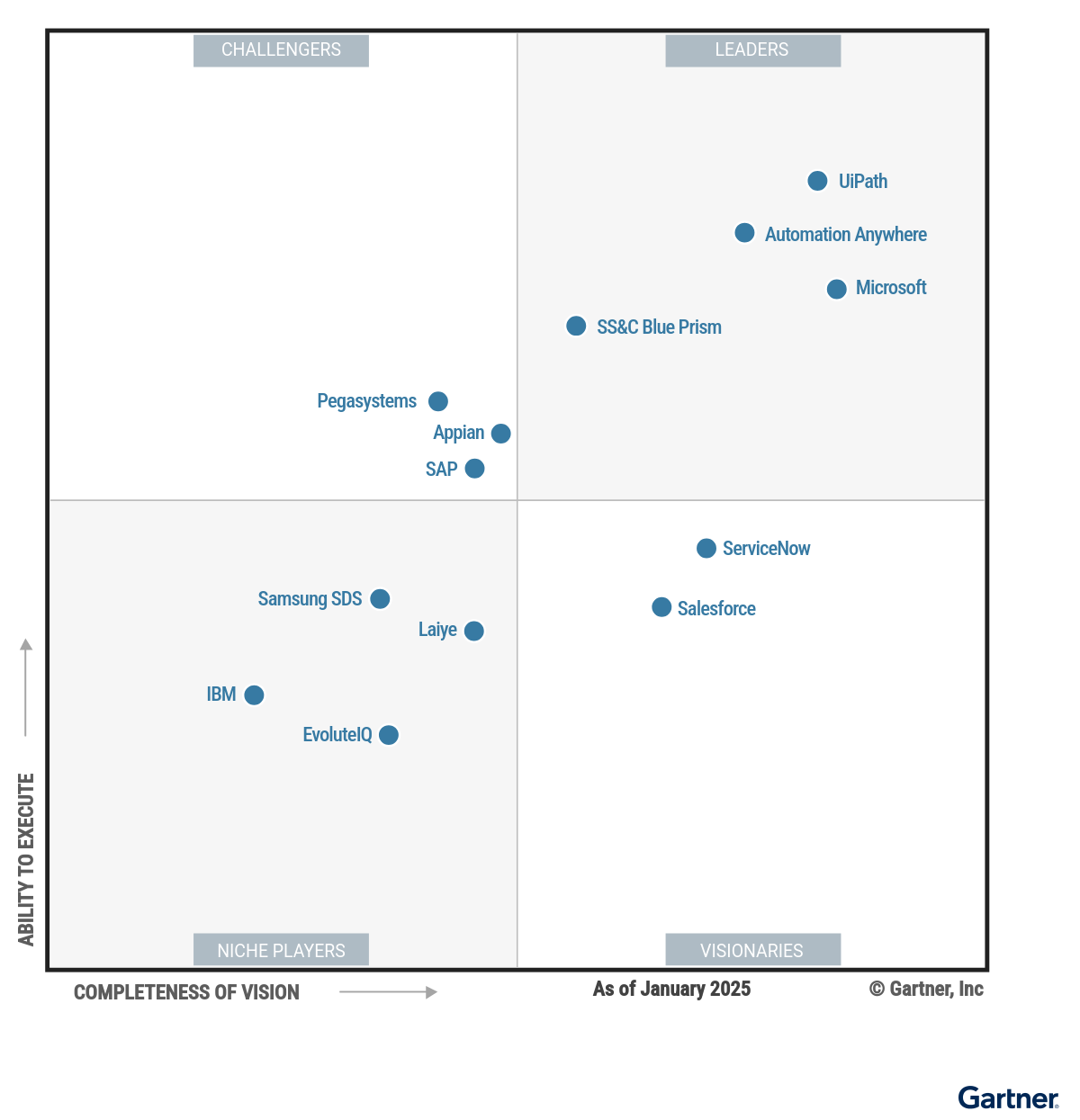
A structured orchestration platform is what makes this possible. It integrates RPA, AI, data flows, and decision logic into a workflow that can operate at enterprise scale without breaking.
Process discovery and mining tools help identify automation candidates. Workflow engines coordinate multi-step processes across systems. And business process management (BPM) layers give stakeholders visibility and control.
When these are supported by a flexible integration layer—whether API-led or event-driven—the result is a system that can move with the business, not lag behind it.
Infrastructure matters too. While some organisations are still operating in on-prem environments, most IA programmes benefit from hybrid or cloud-native deployment models. These offer better scalability, modularity, and access to pre-trained AI models.
But they also introduce complexity. Many enterprises still rely on legacy systems that were never built to integrate with modern platforms. Without proper interoperability, automation ends up sitting on the sidelines instead of driving the process.
The most effective IA stacks are built with flexibility in mind. They avoid lock-in, support modular growth, and prioritise visibility across the full automation lifecycle. It’s not about assembling the most advanced tools.
It’s about connecting the right ones in a way that serves the business—not the other way around.
Final Thoughts: Intelligent Automation Is a Strategic Imperative
Intelligent automation is no longer about technology adoption. It’s about strategic alignment.
The enterprises seeing the greatest value are not the ones with the most bots or even the most advanced AI. They are the ones that treat intelligent automation as part of how the business operates, evolves, and competes. They focus on orchestration, not just automation.
They invest in frameworks that support maturity, not just implementation. And they build systems that deliver measurable outcomes—not just productivity gains. The shift is clear. Intelligent automation is not a quick fix or a one-team initiative. It is an enterprise capability that links AI deployment, operational efficiency, and business enablement into something sustainable.
That takes structure, readiness, and the ability to course-correct when things drift off track. For teams making that shift now, having access to clear frameworks, credible benchmarks, and the lessons behind real enterprise use cases can make all the difference. EM360Tech continues to gather those insights for the leaders building what’s next.


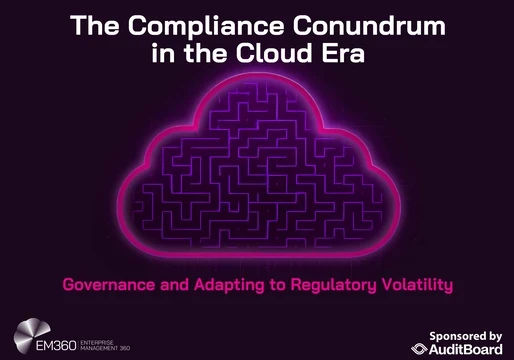

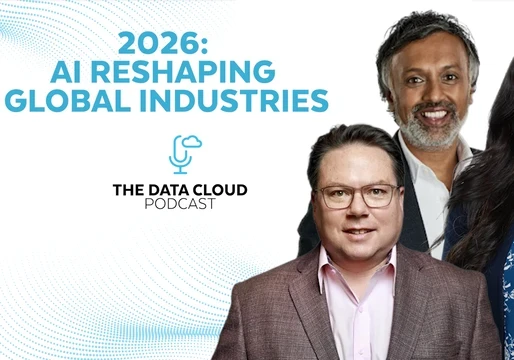
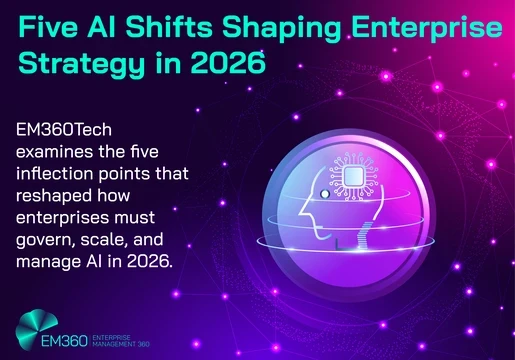

Comments ( 0 )